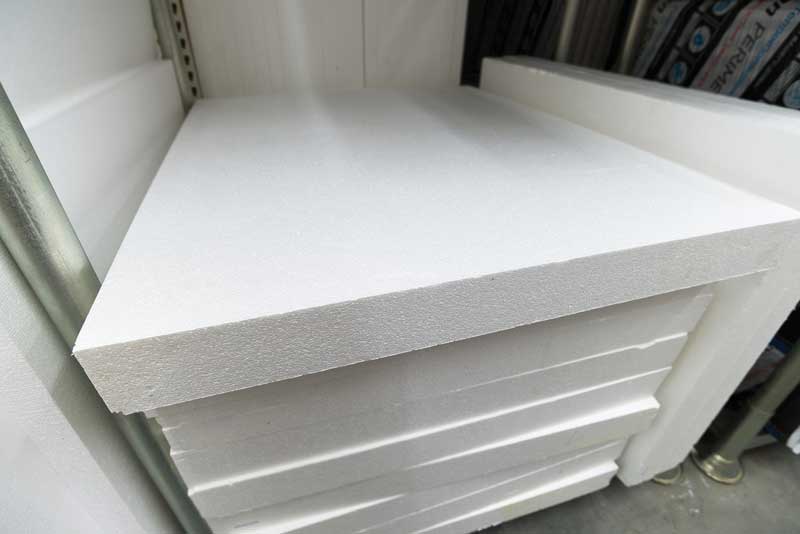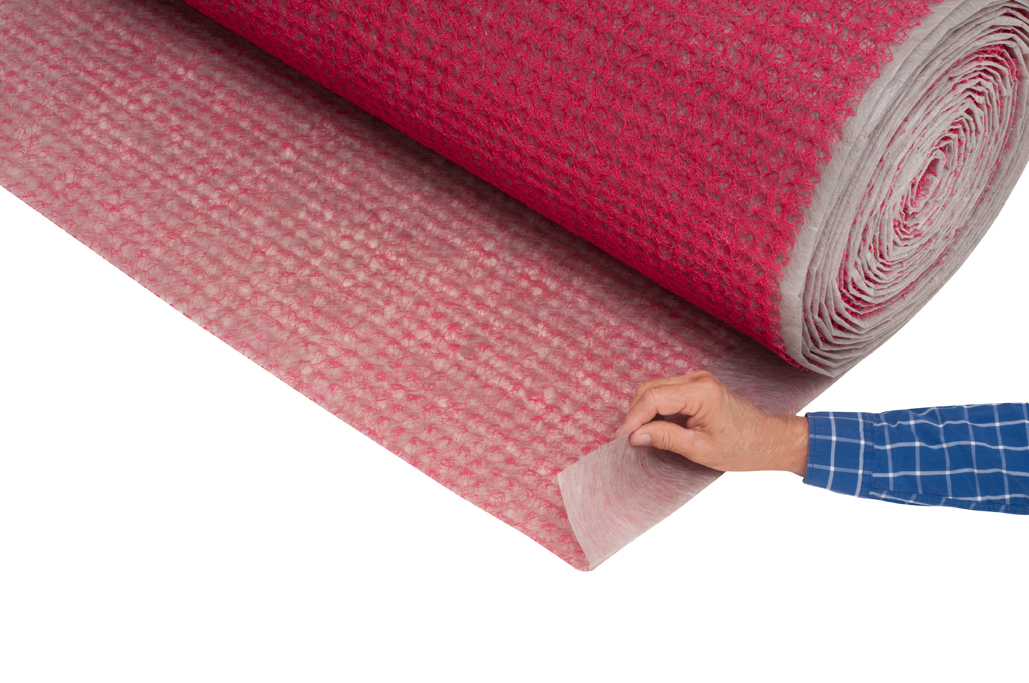Comparing Polystyrenes: Looking at the differences between EPS and XPS

Water resistance
There are fundamental differences between the properties of XPS and EPS that are essential to determine in deciding which is the better choice for wall applications requiring high resistance to moisture intrusion. The water absorption rate by total immersion for XPS is listed at 0.3 percent maximum by volume, compared to 2.0 to 4.0 percent for EPS, depending on product density. That is a substantial difference to be taken into account when specifying a durable project.
The closed-cell structure of XPS makes it more resistant to water. Although EPS beads are closed-cell and hydrophobic, they are also surrounded by voids. These voids are responsible for the higher water absorption volume found in finished EPS board. The blowing agent used in EPS is quickly replaced by air and paired with these voids. The result is an EPS insulation product with lower thermal resistance capability when compared to XPS. An EPS product with higher density would have fewer voids and thus less potential for water absorption and an increase in thermal resistance.
A higher potential for water absorption means a higher potential for the growth of mold. Again, most EPS products sold at home improvement warehouses absorb much more water than XPS products.
The ‘green’ factor
A building’s ‘green’ rating is also of concern for both owners and those in the design-build sector. While both XPS and EPS have green features, it is important to consider the blowing agent used to create the foam.
EPS is often produced with pentane, which has a very low global warming potential (GWP). XPS uses hydrochlorofluorocarbons (HCFCs) as the blowing agent, which has a high GWP, and has shown to lose some of its R-value over time as this gas slowly escapes. (See Building Green vol. 2, No.1, which can be found on www.buildinggreen.com.) However, this may soon no longer be a negative factor, as XPS manufacturers have begun to shift to newer blowing agents with a zero-ozone depleting formula. To know if the selected product is the newer type, one should consult the manufacturer’s safety data sheet (MSDS).
EPS can be considered a suitable choice for green building designs because it offers the environmental advantages of energy efficiency, recyclable content, resistance to mold, and indoor environmental quality. With hundreds of plant locations in North America, EPS and XPS can help meet green building localized manufacturing goals, which, in turn, helps to reduce the impact of transportation.
Its use in innovative applications improves the performance of a building’s envelope. Further, EPS applications have shown to consistently reduce both jobsite waste and labor costs during installation. Environmental benefits last through the service life of a building with higher insulating properties that result in measurable savings. In addition to the environmental benefits of EPS, the energy needed to make it can be less than what is used to produce non-foam insulating materials. In one such study, conducted by EPS-IA, the energy required to produce foam insulation is 24 percent less than what is needed to make the amount of fiberglass necessary for an equivalent R-value at a representative volume. (For more information, see “EPS Industry Alliance, 2012 Report,” which can be accessed online by visiting www.espindustry.org.)

For more than 60 years, EPS has been free of both chlorofluorocarbons (CFCs) and HCFCs. It provides stable R-values that do not need to be adjusted as years pass. EPS offers mold resistance and receives a favorable rating under ASTM C1338, Standard Test Method for Determining Fungi Resistance of Insulation Materials and Facings. This test method is used to determine the ability of an insulation and its facing to resist fungal growth.
Green building credits can be earned by specifying EPS foam insulation in many point categories such as recycled and recyclable content, energy efficiency, indoor air quality (IAQ), sustainable jobsites, and general innovation. Leadership in Energy and Environmental Design (LEED), and other green building accreditation programs, recognize numerous system applications, including SIPS and ICFs that use EPS to provide significant environmental advantages.
To keep an even perspective on both types of insulation, it must be noted XPS has many favorable attributes, including its unique properties that separate it from other types of foam insulation. XPS has many applications, including below slabs, grade foundations, and walls. It is often specified when higher compressive strength, greater moisture resistance, and elevated thermal resistance in the presence of water are required.
For green builders, XPS has two major strikes against it. The material currently contains the flame retardant HBCD, and its blowing agents have a very high global warming potential. However, recycled XPS is widely available and is cheaper than new EPS or XPS. The CO2 impact of recycled XPS has already taken place once, making reclaimed foam potentially the ‘greenest’ of all foam insulation products.
Making the choice
Both EPS and XPS are effective forms of exterior wall insulation and a large amount of contrasting information has been given in this article. However, a solid grasp of these differences is essential to make the best specification choice. The selected insulation will most likely be in service for decades as replacing wall sheathing can be quite an expensive project. (These comparisons are for estimates only and should not be used exclusively for design purposes. It is important to refer to each manufacturer’s specific performance specs for more details on each of these products.)
Jason Burgess has been the products manager for Colonial Materials for more than 10 years. He specializes in insulation, lumber, and non-core products. Burges earned a business degree from Belmont Abbey College in 2006, with a concentration in management. He has been involved in the industry since he was 14, when he started working during summers and school breaks at Dellinger’s Building Supply. He can be reached at marketing@gms.com.



